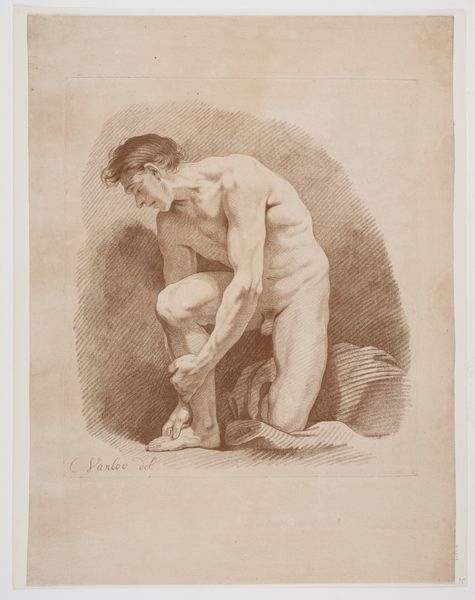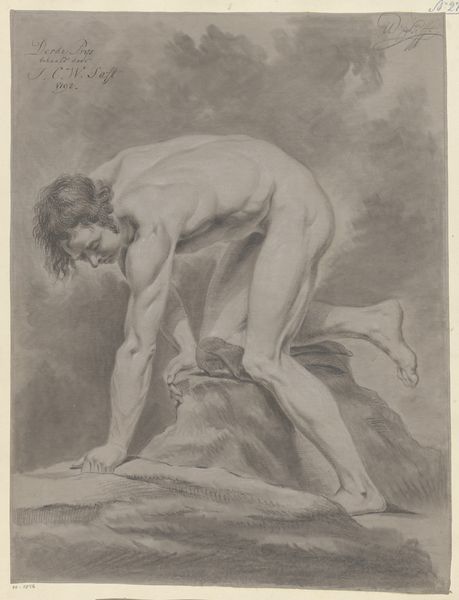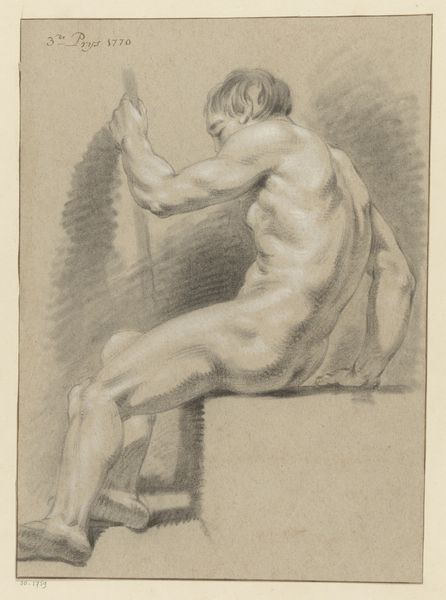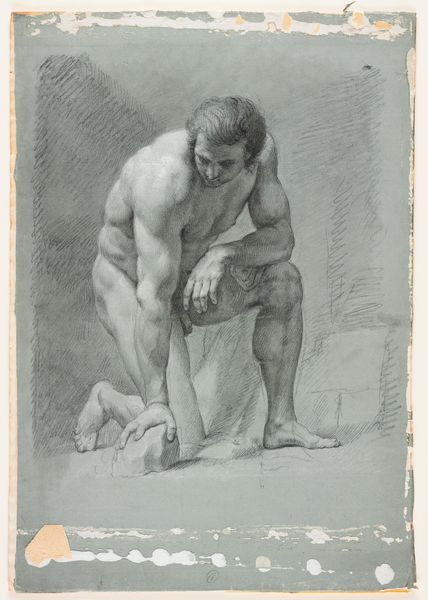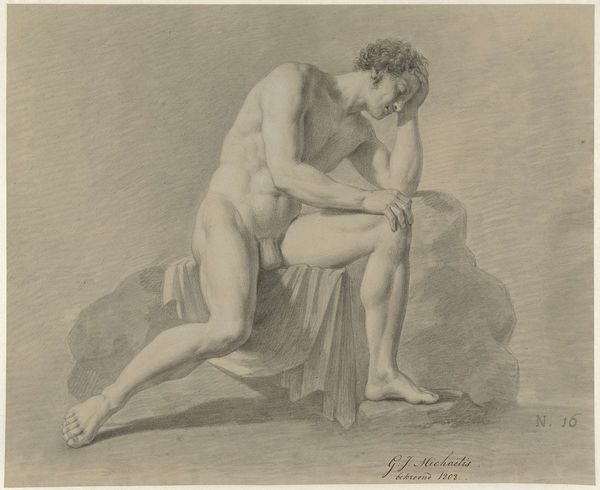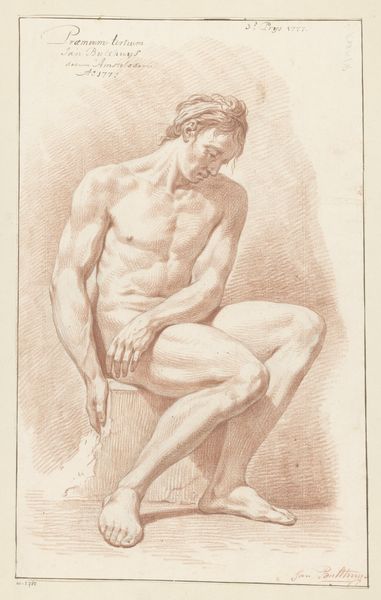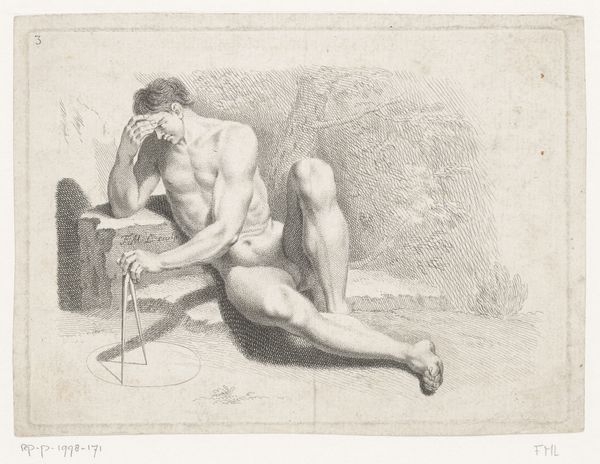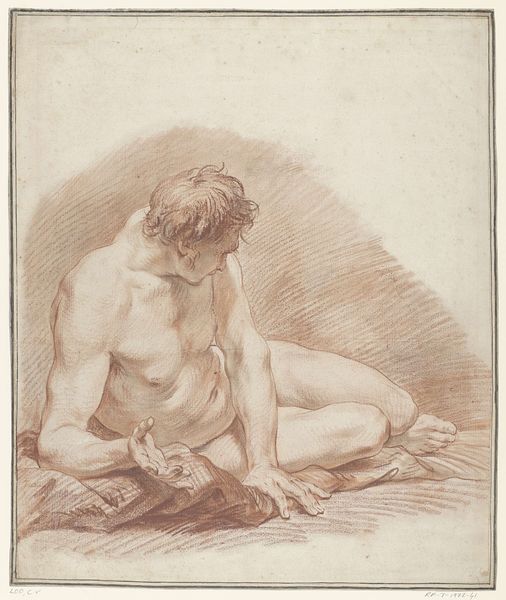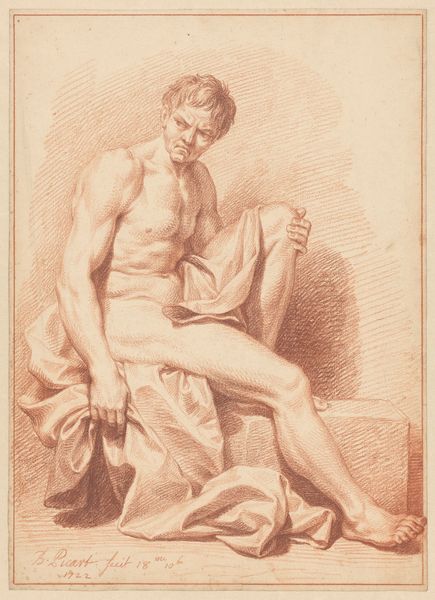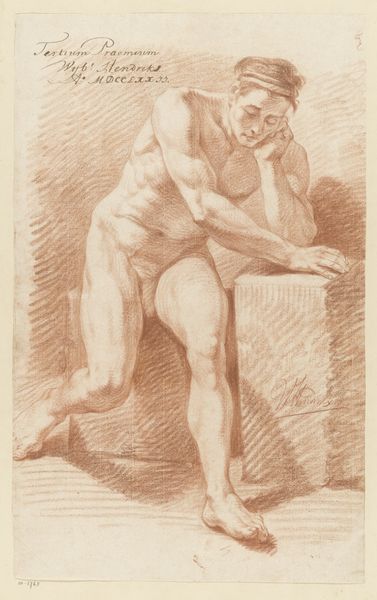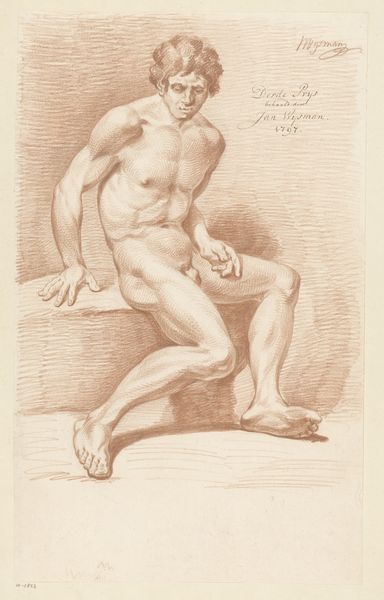
drawing, ink
#
portrait
#
drawing
#
baroque
#
figuration
#
ink
#
academic-art
Dimensions: 452 mm (height) x 402 mm (width) (plademaal)
Curator: Immediately, I am struck by this palpable sense of vulnerability and interiority. The sepia tones contribute to a very somber atmosphere, almost melancholic, no? Editor: Indeed. The artwork, whose original title translates to "Male Model Resting on Left Knee," comes to us from Isak Henningsen, dated sometime between 1755 and 1759. Executed in ink, it embodies the academic style popular at the time. It reminds me, of course, that for many people art was about portraying the human body as a kind of ideal. Curator: And a symbol. The model’s pose itself—kneeling, head bowed, clasping his leg—it’s such an interesting inversion of classical heroic representations. Is this pose a form of visual trope to symbolize shame? Or is this stance to suggest a moment of profound introspection? Editor: Potentially both, though within the context of academic art, it likely served a very specific purpose in educating future generations of artists, and should remind us that while his is resting on a pillow the man in front of us has no name. During Henningsen's lifetime, male artists commonly received state sanctioned resources to sketch anonymous models that were usually members of the working class, with their skin irregularities meticulously marked, not in their likeness, but as though they were automatons or objects in service to craft the white and gendered ideal in marble statuary, many of which still adorn cityscapes across Europe. Curator: Interesting that you point this out! And I hadn’t noticed that before but his gaze directs attention down the calf he clasps as his gaze shifts to us--his model may also subtly echo a historical longing for balance in our time here as bodies and in society, even if he himself is of the laboring class. A moment of vulnerability perhaps available only on display! I wonder though: do you feel his is gaze beseeching the artist as a power structure? Editor: I wonder if Henningsen's inclusion of contour suggests that some hope might exist with representation of these laboring male bodies with compassion outside the scope of this gaze? It does give one pause to see his muscles with such precision. What remains, then, when so much labor is put on his skin with such care, is his representation less anonymous as time wears on, his pose captured indefinitely, more iconic than ever before? Curator: Perhaps, but what an evocative depiction. There is, in him, a yearning that is almost palpable. Editor: Indeed, that the artwork allows for this very exchange proves its continued power and relevance. Thank you.
Comments
No comments
Be the first to comment and join the conversation on the ultimate creative platform.
